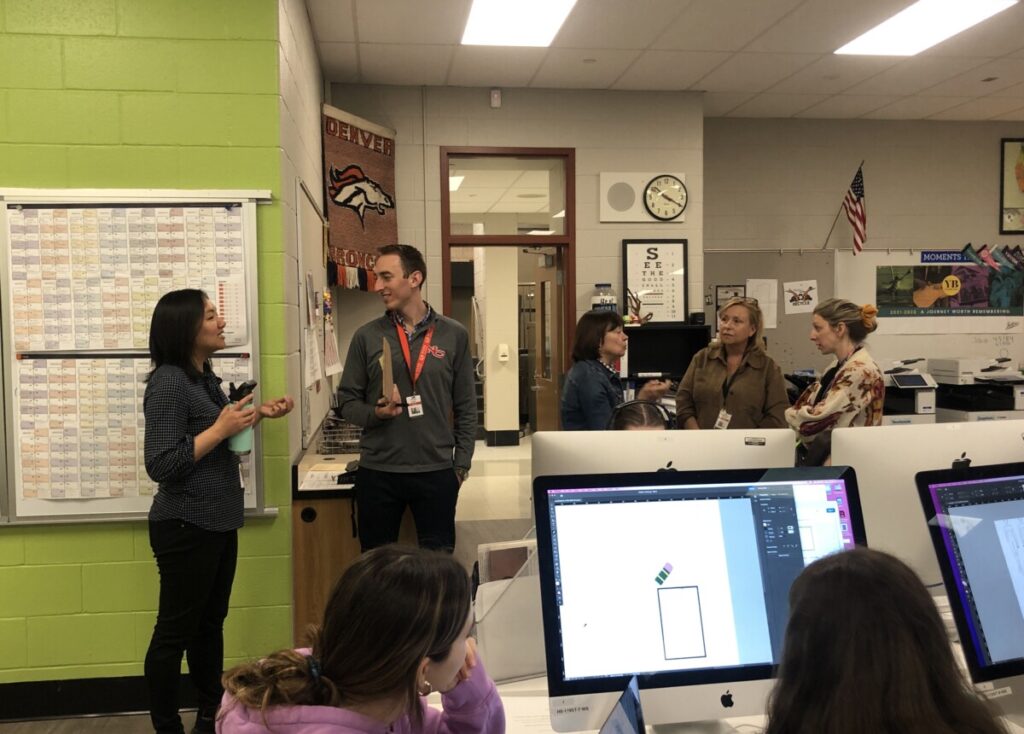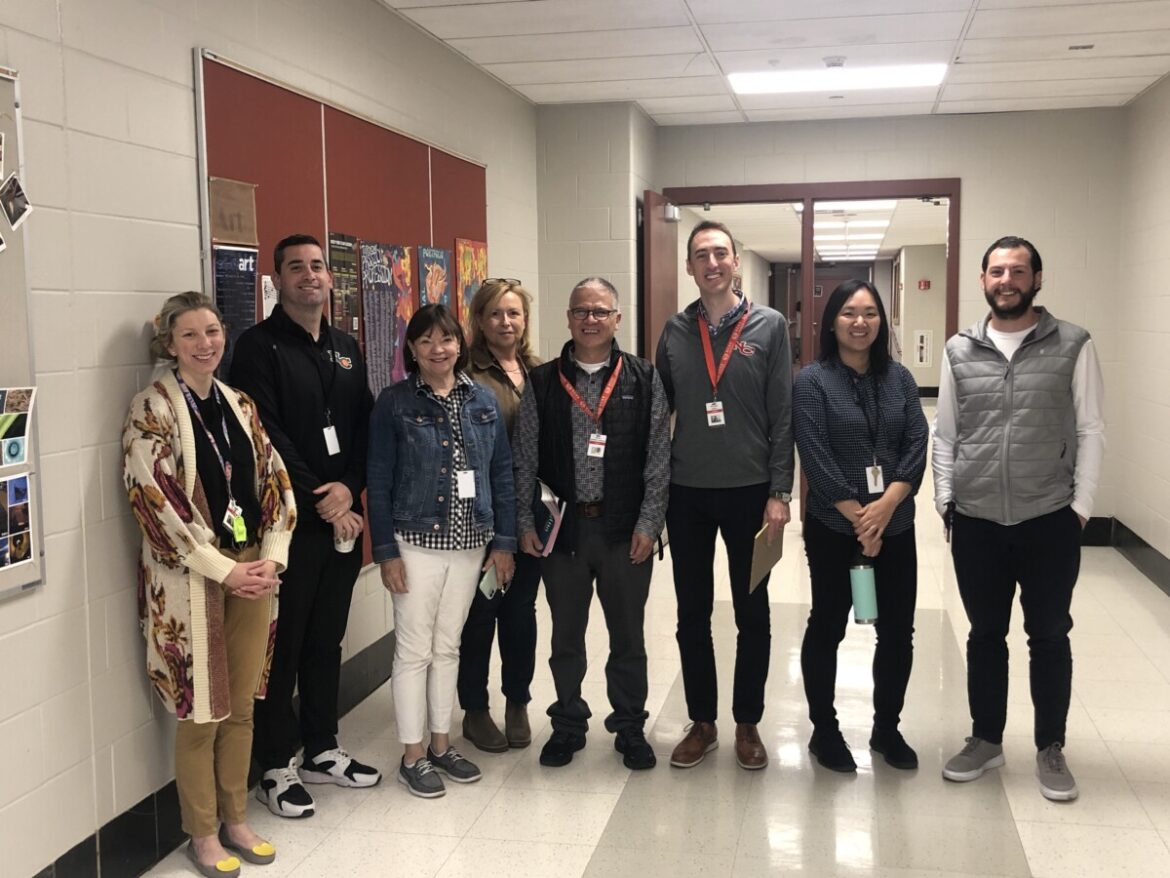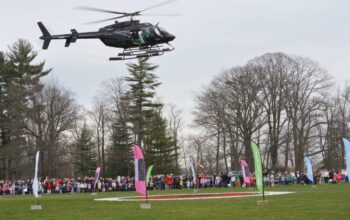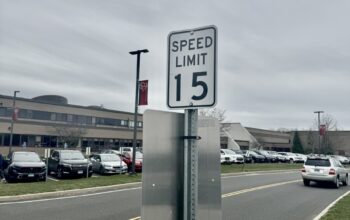Avery Cotton, Opinions Editor
@averyccourant
Every month or two, a series of teacher walkthroughs are conducted during the school day. Led by Science Department Chair Michael LeDuc, the walkthroughs provide the teachers who participate with an unrivaled professional learning opportunity, giving them a glimpse into novel classroom environments across a variety of subjects. This year, five walkthroughs were held, with the last one happening on April 19th.
Each walkthrough session is organized systematically to allow teachers to visit as many classrooms as possible. “We start the day by gathering at 8 am to introduce ourselves and talk about things that we’re individually working on as teachers — things that we’re hoping to improve upon in our own practice,” Mr. LeDuc said. “We visit 20-30 classrooms over the course of the day, and at the end, we discuss what we took away from the experience that we can translate into our own teaching.”
Although each session follows the same general structure, no two sessions are the same. “We put out a survey to teachers to see who’s interested, and we build a team by trying to get a good mix of each department,” Mr. LeDuc said. “It can be really helpful to have different perspectives in the room, especially during discussions. For example, a science teacher can talk about how the lab period fits into the greater context of the class, while a language teacher can discuss different teaching spaces like the language lab, so we try to get a good representation of the faculty.”
Over the several years that it’s been held, the walkthroughs have become popular among the faculty. “Teachers who weren’t selected in the first round had a little more priority in the second round, but most of the interested people got a chance to do it this year,” Mr. LeDuc said. “The walkthroughs give teachers a chance to really experience what it’s like to be a student here, and using our fellow colleagues as resources to help us become better teachers is a very positive experience. For teachers who spend a lot of time in their department, the walkthroughs give them a chance to meet other teachers and get out around the building. Lots of teachers tell me they’d love to do it again next year.”
Counselor Daniel Farina was one of the eight faculty members who participated in April’s walkthroughs. “Mr. LeDuc sent out an invitation for faculty who wanted to do the walkthroughs, and I decided to sign up,” Mr. Farina said. “One of my goals as a new counselor in the building is to see the way our students operate throughout the day and observe how subjects are taught. I thought the walkthroughs were a great opportunity to observe this.”

One of the classroom environments that Mr. Farina particularly enjoyed was the choir elective. “It was wonderful to see how Ms. Gleason taught the class with so much passion, and I now know why the kids who take choir love it so much,” Mr. Farina said. “It was eye-opening to see the way the students worked together and how Ms. Gleason commanded the room.”
According to Mr. Farina, the walkthroughs were a fantastic experience that he would readily participate in again. “The walkthroughs demonstrated to me how awesome the high school community is, from the administrators to the teachers and students, and I truly think every staff member should participate in it at least once,” Mr. Farina said. “ I was amazed by the ability of our students to go through a whole day of their schedule and be engaged in every single class — it’s a testament to the student body’s desire and ability to learn. I left each class that we visited with a greater appreciation for our teachers and our students.”
During the most recent walkthrough, Mr. LeDuc also learned a lot by observing the different classroom environments. “I saw a lot of student-centered work that wasn’t really teacher-directed as well as some really great questioning techniques from teachers,” Mr. LeDuc said. “Education is in a very different place than it was 15 years ago — historically, it was much more commonplace to have long lectures. These days, students understand that they’re not going to come to class and have a 45-minute lecture because that’s not how we do things anymore regardless of the discipline.”
Above all, Mr. LeDuc attempted to make the group’s presence discreet. “I tried to be a fly on the wall — when appropriate, I asked students what was going on,” Mr. LeDuc said. “When the classes were engaged in group work, we asked them what they were doing to better understand how the teachers structured the class. We also tried to avoid coming in with a notepad or a clipboard because it can change the tone of the class; instead, the teachers would take notes on their phones in the halls between classes.”
Junior Griffin Bramwit has seen the walkthroughs happen for years. “I remember walkthroughs occurring even when I was in middle school,” Griffin said. “Superintendents and principals from other districts would occasionally visit our classes to see what was going on.”
Griffin thinks that the teachers generally do a good job of remaining inconspicuous. “The teachers walk around the rooms they visit, and they try to be very unobtrusive,” Griffin said. “Sometimes, teachers have approached me to ask what I’m working on, or alternatively they might sit down and observe the teacher that’s lecturing. As a student, I feel pretty indifferent about the walkthroughs, as I don’t get distracted by them.”
And how might the walkthroughs be improved? “One way the walkthroughs could be improved is leaving more time for reflection at the end of the day because there’s always more to talk about,” Mr. LeDuc said. “Doing more walkthroughs would also help since more teachers were always interested in participating than we could accommodate.”




